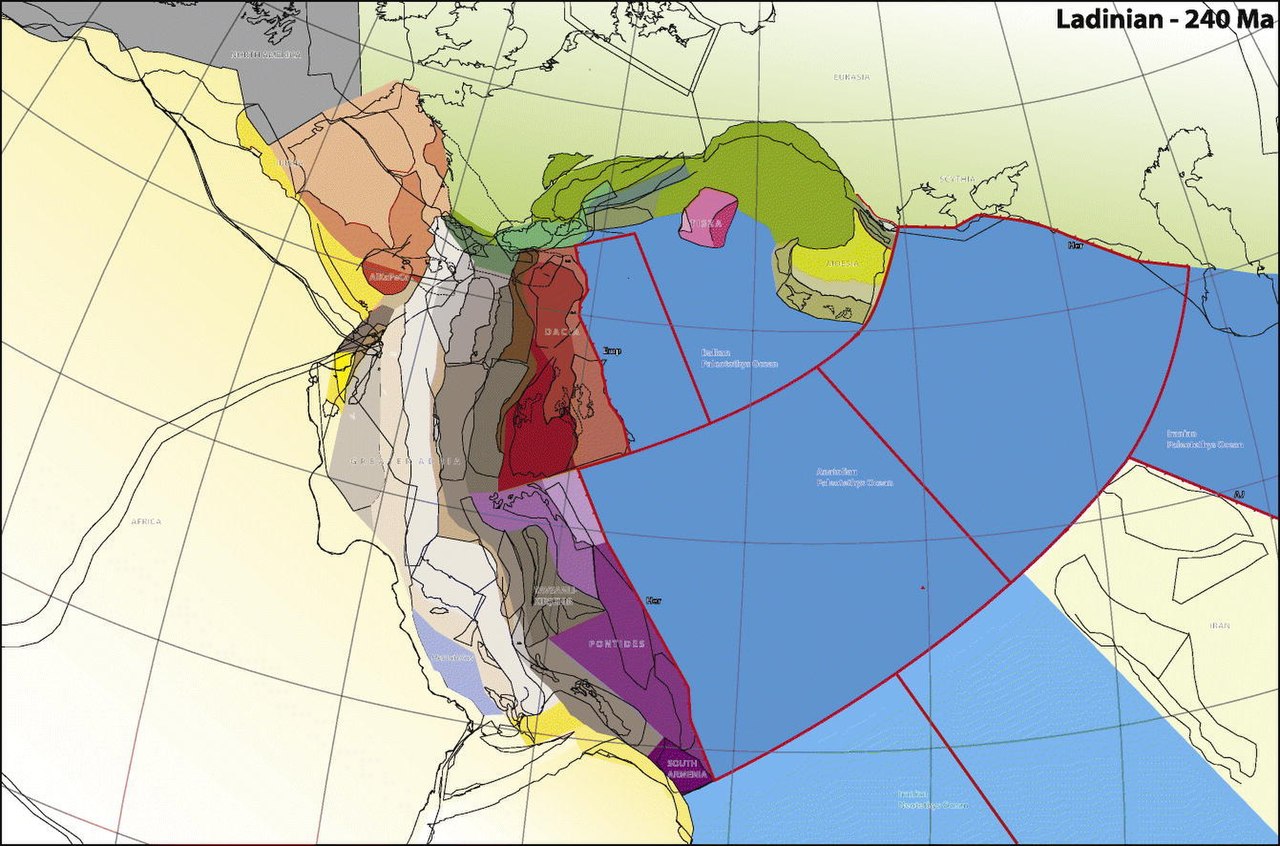
Recent research shows that more than 200 million years ago, Greece was part of a lost continent scientists call “Greater Adria.”
The only visible remnants of Greater Adria today are the mountain ranges of southern Europe, such as the Alps, Apennines, and Balkan Mountains. These mountains were formed as Greater Adria was subducted, or pushed beneath, the Eurasian Plate.
Geologists have been able to reconstruct the shape and location of Greater Adria by studying the rocks and geological structures of the Mediterranean region.
For example, scientists have found that many of the rocks in the Alps and other mountain ranges are similar to rocks that are found in North Africa. This suggests that Greater Adria was once connected to North Africa.
According to a decade-long study coordinated by Utrecht University, a piece of continental shelf the size of Greenland, once separated off from today’s North Africa then submerged itself under the earth’s mantle under what is today southern Europe.
Scientists have reconstructed the evolutionary history of the mountain ranges and seas in the region. In order to achieve this, geologists from various countries studied all the mountain ranges from Spain to Iran in detail for ten years, concluding that a large piece of North Africa’s continental shelf plunged into the earth’s mantle under today’s Southern Europe.
According to the head of the research team, Douwe van Hinsbergen, Professor of Global Tectonics and Paleogeography at Utrecht University, most of the mountain ranges of this area originated from a single continent that separated off from North Africa more than 200 million years ago.
The lost continent of Greater Adria drifted north from Africa
Then a Greenland-sized piece of continental plate broke off from what would become North Africa and started drifting north. Between 120 and 100 million years ago, the plate smashed into what is Southern Europe today.
Although the speed of that collision was no more than 3 to 4 cm (1.5 inches) per year, it ended up shattering the 100-km (62-mile) thick crust of the more northerly land mass.
The only remaining part of this continent that is intact and above sea level today is a strip that runs from Turin, Italy via the Adriatic Sea to the heel of the boot that forms Italy. Scraped-off pieces also survive in the mountains of the Apennines and the Alps, as well as the Balkans, Greece, and Turkey.
With the reconstruction of the lost Greater Adria, geologists have now made a substantial contribution to the fundamental body of knowledge concerning mountain range formation. According to van Hinsbergen, “subduction,” the plunging of one geologic plate under another, is the basic way in which mountain chains are formed.
The research also provided important information about volcanism and earthquakes which the scientists are already applying to other studies. Seismic waves can still detect the plate, most of which is now wedged into the earth at a depth of up to 1500 km.
Additionally, using the findings of the research, scientists can now predict, to a certain extent, what a given area will look like far into the future.
In the short term, there are also economic advantages related to this geological research. Ore deposits and stone which are used for construction material are often found in mountain ranges such as those in the area investigated.
The geological systems in which these resources were first formed are fragmented but are located close together within the reconstructed mountain ranges.
Related: First Map of Earth’s Lost Continent, Zealandia, Published
See all the latest news from Greece and the world at Greekreporter.com. Contact our newsroom to report an update or send your story, photos and videos. Follow GR on Google News and subscribe here to our daily email!



